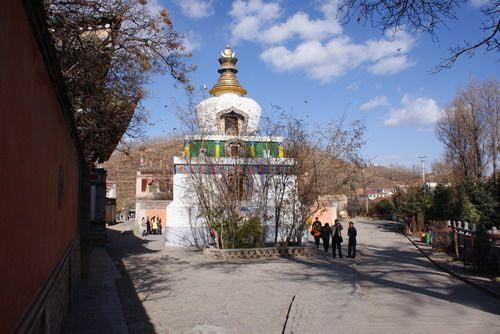
Ta'er Monastery is one of the largest monasteries of the Yellow Sect of Tibetan Buddhism and is said to be the birthplace of Zongkaba (1357-1419), the founder of the Yellow Sect.
Standing in an imposing manner according to the gradient of the mountain, the Ta'er Lamasery is a wonderful architectural complex that embraces 9,300 structures, including scripture halls, Buddha halls, lamas' residences, and Buddhist pagodas. Built in 1622, in the center of the entire complex, the Great Hall of Gold Tiles is the core structure of the lamasery. The ridges of the hall's roof are decorated with auspicious objects such as treasure bottles, gold streamers, and gold deer. In the center of the hall is a silver pagoda built around a papal tree; and a statue of Tsongkhapa, the founder of the Yellow Sect of Tibetan Buddhism, is placed in the pagoda. In the hall there also exists a collection of hundreds of works by Tsongkhapa and his disciples as well as hand-written copies of scriptures in Tibetan and Mongolian. Ta'er Lamasery is a combination of Tibetan and Han architectural styles, and it was built to suit the topography, sitting perfectly on the slopes of the mountain. Every year four Great Prayer Festivals are held on the 15th day of the first month of the Chinese lunar calendar. Beautiful religious legends and mysterious stories of the three spectaculars of Ta'er Lamasery are the butter sculptures, mural paintings and embroidery.




